Editorial
USDA-APHIS Belatedly Releases Incomplete AI Virus Sequence Data
|
|
 On Sunday, April 21st, USDA-APHIS released 239 genetic sequences relating to H5N1 isolates. The data was released to the National Library of Medicine database as raw sequence data (FASTQ files). The sequences lacked essential supporting information that can be used by molecular epidemiologists to ascertain the sources of the isolates and how they have evolved over time. On Sunday, April 21st, USDA-APHIS released 239 genetic sequences relating to H5N1 isolates. The data was released to the National Library of Medicine database as raw sequence data (FASTQ files). The sequences lacked essential supporting information that can be used by molecular epidemiologists to ascertain the sources of the isolates and how they have evolved over time.
An alternative database, the Global Initiative on Sharing All Influenza Data (GISAID), was established by scientists under the guidance of the World Health Organization to monitor the emergence of both human and animal influenza strains. The objective was to identify viruses with zoonotic and pandemic potential. Information posted to GISAID contains consensus sequences that have been refined and are devoid of contamination and errors. These sequences are supported by the origin of the sample, species and the location and time of collection. The data posted by USDA identifies ‘time’ as 2024 and ‘location’ as USA.
 In late 2019, scientists and regulatory officials worldwide condemned China for reluctance to release sequences and detailed information on SARS-CoV-19 and their subsequent removal of molecular biological information from data sets that they maintained. Are we not in a similar situation? Is this due to institutional ignorance since deliberate obfuscation could never be contemplated by a U.S. agency! Why was USDA-APHIS or ARS holding 239 sequences when the H5N1 HPAI epornitic has persisted since 2022? In late 2019, scientists and regulatory officials worldwide condemned China for reluctance to release sequences and detailed information on SARS-CoV-19 and their subsequent removal of molecular biological information from data sets that they maintained. Are we not in a similar situation? Is this due to institutional ignorance since deliberate obfuscation could never be contemplated by a U.S. agency! Why was USDA-APHIS or ARS holding 239 sequences when the H5N1 HPAI epornitic has persisted since 2022?
Notwithstanding the paucity of data released, molecular epidemiologists were able to draw some conclusions. Dr. Michael Worobey, at the University of Arizona, was able to determine that the most recent common ancestor of the H5N1 isolates from dairy cows was introduced into herds during mid- to late December 2023. This has profound epidemiologic implications suggesting widespread infection, notwithstanding the apparently low morbidity rate in infected herds. The larger question relates to the extent of H5N1virus in U.S. dairy herds given that asymptomatic cows have yielded positive nasal swabs. The revelation that PCR assays on commercial milk have yielded viral RNA, but not live replicating virus in 58 out of 150 samples from ten states is not unexpected and suggests widespread infection. Epidemiologists affiliated to GISAID are eager to access curated sequences to continue studies and to determine the potential for emergence of a human pandemic strain.
On the positive side, only one individual working with dairy cows who demonstrated conjunctivitis has yielded H5N1 virus, but with no evidence of human-to-human transmission. Preliminary studies confirmed that the H5N1 virus isolated from the dairy farm in Texas was similar to the virus isolated from a dairy farm in Michigan that received animals from the index case. The virus isolated from the extensive outbreak in laying hens in Michigan and implicated in a preliminary field investigation of the source of infection conformed to a common cluster. Enigmatically, the genetic sequence from the human case on the Texas dairy farm was sufficiently different from the similar wild bird, cat, cow and chicken sequences suggesting a different origin of infection. Evidently the worker did not contract infection from contact with cows on the index dairy herd in Texas. Dr. Tom Peacock, affiliated with the U.K. Pirbright Institute, noted, “The virus is basically too distant a cousin to be connected directly to the outbreak which either means it is either from a second spillover or that there was an early bifurcation of the cattle sequences.”
Susceptibility of mammals to the avian strain of H5N1 has been known since mid-2023 given isolation from scavenging mammalian species in North America including skunks, raccoons, pumas, coyotes and bears. Emergence of the infection in farmed mink in Spain and in marine mammals was clearly associated with animal-to-animal transmission.
Under the aegis of the Pan-American Health Organization, scientists in Latin America have made available sequences from marine mammals and migratory birds. They have organized meetings to review findings and to consider contingency plans in the event of an emergence of a zoonitic strain of H5N1.

EGG-NEWS has previously criticized USDA-APHIS for their pedestrian approach to HPAI , comprising a repetitive sequence of diagnosis, depopulation and decontamination. Failure to assign adequate resources to field and molecular biology and an apparent reluctance to aggressively investigate and publish on the epidemiology of avian influenza represents a grievous and ultimately costly omission. The egg-production and turkey segments of the poultry industry have experienced an ongoing epornitic extending over two years and involving depopulation of over 70 million commercial birds. This has been costly to the public sector, to producers and ultimately consumers.
This criticism is now extended to a lack of transparency with respect to releases on the molecular epidemiology of HPAI and publication of annotated sequences. Dr. Rick Bright who led the Biomedical Advance Research and Development Authority from 2016 to 2020 stated, “It’s so critical that the U.S. Government should be as transparent as they can right now and share sequences and all of the data so the world can look at it and make their own risk assessment and start making their own vaccines if they need to.” Bright continued, “What would we say if this particular virus did get out of control? Would we look back on these last two or three months and say I wish we would have done something else? We must share all these sequences so the world can get ready.”
 Dr. Worobey noted, “There is a whole community of colleagues around the world who have a lot of experience with influenza and often can see things or conduct analyses that might show something that others have missed.” In the unfortunate event that a zoonotic strain emerges from the current circulating H5N1 in free-living avian and mammalian species or in commercial flocks and herds, administrators at USDA-APHIS will have a lot on their collective conscience. This is attributed to their unconscionable lack of transparency and their inactivity in failing to aggressively investigate the epidemiology of HPAI. The U.S. poultry and dairy industries, consumers, and ultimately taxpayers deserve better. Dr. Worobey noted, “There is a whole community of colleagues around the world who have a lot of experience with influenza and often can see things or conduct analyses that might show something that others have missed.” In the unfortunate event that a zoonotic strain emerges from the current circulating H5N1 in free-living avian and mammalian species or in commercial flocks and herds, administrators at USDA-APHIS will have a lot on their collective conscience. This is attributed to their unconscionable lack of transparency and their inactivity in failing to aggressively investigate the epidemiology of HPAI. The U.S. poultry and dairy industries, consumers, and ultimately taxpayers deserve better.

|
Egg Industry News
Egg Week
|
|
USDA Weekly Egg Price and Inventory Report, May 1st 2024.
Market Overview
- The average wholesale unit revenue values for Midwest Extra-large and Large sizes were down 16.2 percent this past week. Medium size was down 16.5 percent. National wholesale price for large in cartons at $2.50 per dozen was approximately $0.95 per dozen above the 3-year average of $1.55 per dozen and up $1.05 from the corresponding week in 2023 at $1.45 per dozen. This past week shell egg inventory was up by 0.8 percent, moderating a rise of 1.5 percent in stock the previous week.
- Although there has been a weekly increase in pullet flocks transferred to laying houses, hen numbers are constrained by the loss of close to 13 million hens due to HPAI on twelve complexes holding from 250,000 to 2.6 million hens during the 4th Quarter of 2023. Pullets are in short supply with losses of 2.5 million growing birds, mainly in California. Since the beginning of April close to 8.4 million hens collectively have been depopulated in a sequence comprising one complex in Texas and three related facilities under common ownership in Michigan in addition to a breeder complex in New Mexico.
- This past week chains apparently narrowed the spread between delivered cost and shelf price. This could result in a continued reduction in generic stock with a proportional rise in demand but only with constant re-ordering to fill the pipeline through May. Discounters are holding prices on generics influencing mainstream retail stores. Eggs are still highly competitive in price against the comparable costs for other protein foods.
- Total industry inventory was up by 2.8 percent overall this past week to 1.69 million cases with a concurrent 11.5 percent increase in breaking stock, following a 0.2 percent increase during the preceding processing week. Demand for egg products has fallen into May attributed to less home-baking and entertaining. Egg products are required for the food service and manufacturing sectors and for exports that increased in February.
- It is now apparent that the inventory held by chains and other significant distributors may be more important over the short term in establishing wholesale price compared to the USDA regional inventory figures. Changes in stock held by DCs and in the pipeline as determined by weekly orders are probably responsible for small cyclic fluctuation in weekly industry stock, especially into and after a holiday weekend.
 |
- Cases of HPAI in the commercial poultry industry and backyard (non-commercial WOAH) flocks tapered during the first quarter of 2024, coincident with the end of the Fall migration of waterfowl that was extended into late 2023 by mild weather. The emergence of the infection in a large complex with 2 million birds in western Texas suggested a reoccurrence of the epornitic as northward spring migration has commenced. The three subsequent related cases in Michigan involving a total of 6.4 million hens may have commenced as an indirect extension from an infected dairy herd although an epidemiologic evaluation in progress will be required to confirm the source and routes of intra-Company dissemination. The number and extent of future possible outbreaks during the spring and fall months of 2024 cannot be projected but sporadic cases in backyard poultry and close to 40 dairy herds in nine widely diverse states is a cause for concern. More surveillance information should be released by USDA-APHIS as it becomes available concerning the prevalence rate of carriers among resident domestic free-living birds and a review of molecular and field epidemiology for the 2022 spring and fall waves of HPAI. The USDA has yet to identify and release specific modes of transmission for the 2022-2023 epornitic including likely airborne spread from wild birds and their excreta over short distances.
- The current relationship between producers and chain buyers based on a single commercial price discovery system constitutes an impediment to a free market. The benchmark price appears to amplify both downward and upward swings as evidenced over the past two years. A CME quotation based on Midwest Large, reflecting demand relative to supply would be more equitable. If feed cost is determined by CME ingredient prices then generic shell eggs should be subject to a Midwest Large quotation.
- According to the USDA the U.S. flock in production was apparently down by 0.4 million hens (0.1 percent) to a new level of 306.6 million for the week ending May 1st The stated total flock of 311.9 million included about one million molted hens that will resume lay during coming weeks plus 4.5 to 5.0 million pullets scheduled to attain production. Given the latest figures it is estimated that the producing flock is at least 17 to 20 million hens lower than before the onset of HPAI in 2022. In January 2024 the USDA adjusted figures to account for depopulation of 13 million hens spread over the last quarter of 2023. There were evident discrepancies between published figures and the theoretical number of hens over successive weeks taking into account known losses and predetermined pullet replacements. The April loss of 8.4 million hens is not reflected in data released over the past four weeks. It is hoped that the USDA agency responsible for publication of flock size will get their act together and coordinate with APHIS to record the number of depleted flocks and promptly provide accurate data. Figures released on May 1st overestimate flock size
- The ex-farm price for breaking stock (rounded to one cent) was down 14.9 percent to $1.34 per dozen.Checks delivered to Midwest plants were down 18.2 percent to $1.17 per dozen this past week. Prices for breaking stock should follow the wholesale price for shell eggs usually with a lag of about one to two weeks.
The Week in Review
Prices
According to the USDA Egg Market News Reports released on April 29th 2024, the Midwest wholesale price (rounded to one cent) for Extra-large was down 16.1 percent from last week to $2.04 per dozen. Large was down 16.2 percent to $2.02 per dozen. Mediums were down 16.5 percent to $1.92 per dozen delivered to DCs. Prices should be compared to the USDA benchmark average 4-Region blended nest-run cost of 75.3 cents per dozen as determined by the Egg Industry Center based on USDA data for March 2024. This value excludes provisions for packing, packaging materials and transport, amounting to 57 cents per dozen as determined in mid-2023 from an EIC survey (with a low response) and now realistically 60 cents per dozen.
Currently producers of generic shell eggs should be operating with positive margins irrespective of region and customer-supply agreements. The progression of prices during 2023 and 2024 to date is depicted in the USDA chart reflecting three years of data, updated weekly.
 |
The April 29th edition of the USDA Egg Market News Report confirmed that the USDA Combined Region value (rounded to the nearest cent), was unchanged at $2.50 per dozen delivered to warehouses for the week ending April 26th 2024. This average price lags current benchmark Midwest weekly values by one week. The USDA Combined range for Large in the Midwest was $2.41 per dozen. At the high end of the range, the price in the South Central region attained $2.57 per dozen. The USDA Combined Price last week was approximately $0.95 per dozen above the 3-year average of $1.55 per dozen. This past week Midwest Large was approximately $1.05 per dozen above the corresponding week in 2023 that was falling from a peak price of $3.70 per dozen five weeks previously to $1.45 per dozen as production recovered from HPAI depletion but with declining market demand.
 
|
USDA Data On Cage-Free Production For April 2024
|
|
EGG-NEWS summarizes and comments on data and trends in the monthly USDA Cage-Free Report. This data is correlated and interpreted in the WeeklyEggPrice and Inventory Report posted on EGG-NEWS mailed on Fridays each week.
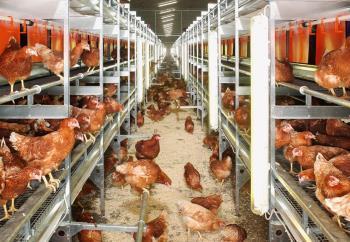 The USDA Cage-Free Report covering April 2024, released on May 1st 2024, documented the complement of hens producing under the Certified Organic Program to be 16.7 million (rounded to 0.1 million), down 8.2 percent from March 2024. This is due to depopulations carried out as a result of HPAI. The number of hens classified as cage-free (but excluding Certified Organic) and comprising aviary, barn and other systems of housing apparently declined by 6.8 percent from March 2024 to 99.2 million, also due to flock depopulation. Hen numbers posted by the USDA for April are considered accurate in relation to known depopulation figures released by APHIS. The USDA Cage-Free Report covering April 2024, released on May 1st 2024, documented the complement of hens producing under the Certified Organic Program to be 16.7 million (rounded to 0.1 million), down 8.2 percent from March 2024. This is due to depopulations carried out as a result of HPAI. The number of hens classified as cage-free (but excluding Certified Organic) and comprising aviary, barn and other systems of housing apparently declined by 6.8 percent from March 2024 to 99.2 million, also due to flock depopulation. Hen numbers posted by the USDA for April are considered accurate in relation to known depopulation figures released by APHIS.
The number of eggs collected is accepted as accurate but since the values for average weekly production are unacceptably high suggesting that the denominator reflecting the number of hens is probably incorrect. Alternatively if conventional eggs from cages are deceptively marketed as cage-free, or if cage free eggs are packed as certified Organic, assuming an accurate number of hens over a given month, the apparent hen-week value would be incorrectly high. The respective numbers of hens claimed for organic and cage-free flocks should reflect chick placements, HPAI depopulation and age-related depletion and should correspond to monthly supply data and inventory extending over successive quarters. Unlike conventional cage production cage-free hens are not generally molted reducing this possible reason for error in calculating rates of production.
Average weekly production for Certified Organic eggs in April 2024 was down 7.5 percent compared to March 2024 with a questionably high average weekly production of 84.4 percent, down from 83.8 percent in March. Average weekly flock production for cage-free flocks other than Certified Organic was down 6.2 percent in April 2024, also with a questionably high average hen month production of 83.4 percent, up from 83.8 percent. Seasonally, younger flocks increase the availability of cage-free and organic eggs in response to pullet chick placements 22 weeks previously in anticipation of peak seasonal demand periods. April 2024 data may have reflected a presumed higher proportion of younger flocks derived from pullet chicks placed during late December 2023 and early January 2024 in anticipation of Easter 2024 demand. Since the proportion of pullets according to housing type is not indicated in the monthly USDA Chickens and Eggs report, it is not possible to assess the relative sizes of flocks producing under the certified organic label or other categories. There is no adequate explanation for the high production rate especially if the stated number of hens is lower than actual, especially with undercounted HPAI flock depopulation. This raises the question of possible illegal diversion of caged eggs into the cage-free or cage-free eggs into the organic supply.
|
Flock Size Average
(million hens)
|
April
2024
|
Average
Q1-
2024
|
Average
Q4- 2023
|
Average
Q3 –
2023
|
Average
Q2 –
2023
|
Average
Q1 –
2023
|
|
Certified Organic
|
16.7
|
18.3
|
18.7
|
18.7
|
18.2
|
17.3
|
|
Cage-Free Hens
|
99.2
|
105.7
|
106.4
|
105.4
|
103.2
|
98.1
|
|
Total Non-Caged
|
115.9
|
124.0
|
125.1
|
124.1
|
121.4
|
115.4
|
|
Average Weekly Production (cases)
|
March
2024
|
April
2024
|
|
Certified Organic @ 84.4% hen/day
|
297,224
|
274,937 -7.5%
|
|
Cage-Free @ 83.2% hen/day
|
1,711,190
|
1,605,671 -6.2%
|
|
Total Non-Caged @ 83.4% hen/day
|
2,008,415
|
1,880,608 -6.4%
|
|
Average Nest Run Contract Price Cage-Free Brown
|
$1.68/doz. (Unchanged since September 2023)
|
|
April 2024 Range:
|
$1.35 to $2.35/doz. (unchanged since March 2023)
|
|
FOB Negotiated April price, grade-ready quality, loose nest-run. Price range $1.80 to $2.00 per dozen
|
Average April 2024 Value of $1.93/doz.
($2.50/doz. March 2024)
|
|
Average April Advertised National Retail Price C-F, Large Brown
|
$3.47/doz. April 2024 (6 regions)
(was $3.28 in March 2024)
|
|
USDA Based on 6 Regions, 4,473 stores
Excluding AK and HI.
|
High: $3.52/doz. (SE. 2,286 stores)
Low: $3.00/doz. (NW. 4 (?) stores)
|
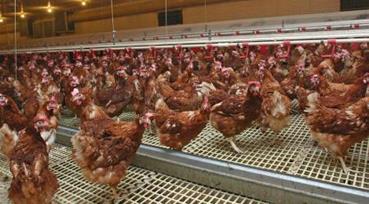 Negotiated nest-run grade-ready cage-free price for April 2024 averaged $1.93 per dozen, down by 22.8 percent from $2.50 per dozen in March 2024, reflecting lower demand relative to supply. The April 2024 advertised U.S. retail price for cage-free eggs over six regions (excluding AK. and HI.) was $3.47 per dozen up 19 cents per dozen (5.8 percent) from March 2024 over 4,473 stores. Negotiated nest-run grade-ready cage-free price for April 2024 averaged $1.93 per dozen, down by 22.8 percent from $2.50 per dozen in March 2024, reflecting lower demand relative to supply. The April 2024 advertised U.S. retail price for cage-free eggs over six regions (excluding AK. and HI.) was $3.47 per dozen up 19 cents per dozen (5.8 percent) from March 2024 over 4,473 stores.
The apparent difference between a recorded average wholesale price of $1.93 per dozen plus a provision of 60 cents per dozen for packaging, packing and transport results in a price delivered to CDs of $2.53 per dozen. The average six-region advertised retail price of $3.47 corresponds to an average retail margin of 37.2 percent (5.5 percent last month) over the average wholesale delivered price. Margins are presumed higher for pastured and other specialty eggs at shelf prices reaching $9.00 per dozen. Chains that are maximizing margins especially on Certified Organic, free-range and pastured categories restrict the volume of sales, ultimately disadvantageous to producers.
Based on the importance of cage-free production, the USDA-AMS issue the Cage-Free report on volumes and prices at monthly intervals for the information of Industry stakeholders. There is obvious doubt as to the accuracy of individual monthly flock numbers especially when reports show a marked change at the end of a quarter or from the previous month without obvious cause, or alternatively when there is no change in the cage-free flock for sequential months.
The May 1st report has accounted for flock depopulations as a result of HPAI in April
It is suggested that USDA should consider a quarterly report with more accurate hen data. This would be more useful to the industry for planning and marketing decisions. Price data is available each week from other USDA reports.
Subscribers are referred to weekly USDA wholesale and retail prices posted in the Egg Price and Inventory Report in EGG-NEWS E-mailed each Friday. The previous Monthly Cage-Free Report is available under the STATISTICS Tab.

|
Commodity Report
|
|
WEEKLY ECONOMY, ENERGY AND COMMODITY REPORT: MAY 2nd 2024.
OVERVIEW
 Prices for corn and soybeans were up by 2.1 and 2.9 percent respectively and soybean meal was higher by 3.5 percent compared to last week. Prices were influenced by technical selling arising from geopolitical concerns and revised projections for crop sizes in Brazil and Argentine. Secondary factors included disruption in shipping in the Red Sea and Panama Canal, carryover from the 2023 U.S. crop, export orders and the predicted ending stocks of corn and soybeans for the 2024 crop. There was no apparent market reaction to release of the April WASDE that retained projections for production and ending stocks from the March report and release of the Planting Intentions Report. Prices for corn and soybeans were up by 2.1 and 2.9 percent respectively and soybean meal was higher by 3.5 percent compared to last week. Prices were influenced by technical selling arising from geopolitical concerns and revised projections for crop sizes in Brazil and Argentine. Secondary factors included disruption in shipping in the Red Sea and Panama Canal, carryover from the 2023 U.S. crop, export orders and the predicted ending stocks of corn and soybeans for the 2024 crop. There was no apparent market reaction to release of the April WASDE that retained projections for production and ending stocks from the March report and release of the Planting Intentions Report.
At noon EDT on May 2nd the CME price for corn was up 2.1 percent compared to the previous week to 447 cents per bushel for May delivery. Corn price was influenced by ethanol demand and the proportionally high ending stock of corn from the 2023 crop. Export orders for the current market year have increased in response to lower prices. Volumes and prices are indirectly influenced by higher wheat prices, events in the Black and Red Seas. Orders by China resumed at the end of the 2022-2023 market-year and have extended through March despite a higher Dollar Index offset by a low FOB prices although with increased ocean freight. Total exports for the current market year are 30.9 percent higher than for the corresponding week during the 2022-2023 year.
Soybeans traded at 1,188 cents per bushel for May 2024 delivery, up 2.9 percent over the week. Lower prices were attributed to short covering, less farm selling and availability from the 2024 Brazil and Argentine harvests. Total exports for the current market year are 18.5 percent lower than for the corresponding week in the 2022-2023 year.
Soybean meal traded at $353 per ton for May delivery, up 03.5 percent compared to $341 per ton for last week. Price was influenced by demand coupled with high crush volumes for consecutive months from December 2023 onwards with increased capacity. Price will fluctuate to reflect the CME price for soybeans and the demand for biodiesel despite the adverse financial situation in this sector. The market previously responded to the increased 2023 crop and higher stocks together with projections for 2024 unchanged from March in the April WASDE Report.
WTI was $3.33 (-4.0 percent) lower from last week to $79.00 on May 2nd with moderate world demand in relation to supply. Price is lower partly due to a lull in the attacks on shipping in the Red Sea, and cessation of hostilities between Israel and Iran. It is accepted that U.S. production is a moderating influence, attaining 12.9 million barrels per day in March with ample reserves. An upward trajectory in price may occur if production cuts by OPEC amounting to 2 million barrels per day and extended through June actually materialize. There was a downward move in price during the week ($83.37 to $79.00 range). Crude oil inventory in the U.S., other than the Strategic Reserve, was up 3.4 percent to 33.5 million barrels last week. High U.S. production is constraining domestic and international prices but the rise in energy cost during past weeks is reflected in inflation restraining the FOMC from lowering the benchmark interest rate.
Economic data released during the past week (Q1 GDP; PCE, Confidence, Productivity, Employment) confirmed slower growth and persistent inflation.
A data-driven Federal Reserve FOMC that passed on a lowering of rates on May 1st will be disinclined to reduce the benchmark interest rate until September at the earliest.
Factors influencing commodity prices in either direction over the past four weeks included:-
- Weather conditions in areas of the World growing corn and oilseeds especially in Brazil and also Argentine with favorable rain recently under the influence of a strong El Nino The 2023 U.S. harvest was completed ahead of the corresponding weeks in 2022 with higher carryover and lower exports of soybeans. (Downward pressure on prices). Planting has commenced for the “new” crop of 2024.
- Geopolitical considerations continue to move markets, especially in the Mideast. Ongoing attacks on Ukraine port facilities have impacted prices of wheat, corn, oilseeds and vegetable oils. Loaded bulk vessels are sailing from Black Sea and Danube River ports using the ‘Humanitarian Corridor” to various destinations. This route is operational despite threats by the Russian Federation to mine the entrance to ports and deployment of airborne missiles. Exports from Ukraine are approaching 1.5 million metric tons per week with a total of 26 million metric tons market year through February, down 11 percent from the equivalent period for 2022-2023 year. Grain production in Ukraine during the current year will be lower than 2022/2023 (Downward pressure on corn and wheat and an indirect effect on soybeans)
- Macroeconomic U.S. factors:-
- Most economists in academia and the private sector are still confident of a “soft landing” for the economy despite the release of the Q1 2024 GDP and recent economic parameters including the ECI, CPI and PPI and with fluctuation in bond rates. Annual inflation as measured by CPI declined from 8.9 percent in June 2022 to 3.5 percent in March 2024. This is in part a response to a series of 11 FOMC rate raises that curbed inflation and cooled the labor market but without precipitating unemployment. There is evident stability in the bank sectors in both the U.S. and Europe. A rise in energy prices is contributing to persistence of inflation.
- The Federal Reserve held the benchmark interest rate steady at the monthly FOMC meeting on May 1st 2024, the sixth sequential pause. The Federal Reserve commentary indicated that the rate would be held at 5.25 percent until a pivot with possibly less than two reductions of 25 basis points each in 2024, after the September meeting at the earliest. Chairman Powell in Congressional testimony and documented in FOMC minutes has indicated that decisions would be based on demonstrated progress in reducing inflation as confirmed by a basket of key economic data, towards an annual 2.0 percent target by mid-2025. Market optimism with projections of five reductions during 2024 was evidently premature.
- The March 28th Bureau of Economic Affairs released the advanced estimate of Q1 2024 GDP at 1.6 percent, below the consensus estimate of 2.4 percent. The Q1 GDP value was influenced by spending by both consumer and government-sectors and with higher investment in housing. By comparison Q4 2023 GDP growth was 3.4 percent. Growth in GDP attained 2.5 percent in 2023 up from 1.9 percent in 2022. The Q1 Personal Consumption and Expenditure Index For Q1 (excluding food and energy) was up 3.7 percent annualized, higher than 2.0 percent in Q4 2023.
- The April 26th Bureau of Economic Analysis released the March Personal Consumption and Expenditure Price Index. The core index (excluding food and energy) was up 0.8 percent from the previous month and 2.8 percent year-over-year. This was in line with estimates. The Headline PCE Index was up 2.7 percent year-over-year, above an estimate of 2.6 percent. On an annual basis the price of goods was unchanged, services were up by 4.0 percent, food by 1.5 percent and energy by 2.6 percent. The headline PCE is closely followed by the Federal Reserve and confirms persistent inflation holding above an annual target of 2.0 percent.
- The April 10th Bureau of Labor Statistics release of the March 2024 CPI confirmed a 0.4 percent increase from February, and 0.1 percent above forecast. The annual increase of 3.5 percent was up from 3.2 percent in February and higher than the anticipated value. The increase in the core value (excluding food and energy) was 0.4 percent from February and 3.8 percent for the 12-month period, and estimates. Food at home was unchanged from the previous month. The category of ‘meat, fish and poultry’ was up collectively by 0.9 percent with eggs up 4.6 percent from the previous month. Food away from home was up 0.3 percent from February. On an annual basis all food was up 2.2 percent with food at home up 1.2 percent and food away from home up 4.2 percent. Energy was up 1.1 percent together with natural gas (-3.2 percent) in March. The shelter category was up 0.4 percent for the month and 5.7 percent over the past year. The macro trend is inclining towards reduced inflation due to a fall in energy prices but this category has recently moved up, detracting from deflation. The CPI heavily influences FOMC rate decisions.
- The March Producer Price Index for Final Demand (PPI) released on April 11th was up by 0.2 percent from February compared to an expectation of 0.3 percent. The PPI was up 2.1 percent over the past 12-months. This is compared to a 6.4 percent increase in 2022. The core PPI value excluding volatile fuel and food, was up 0.2 percent for March and up 2.8 percent for the 12-month period. Food was up 0.8 percent compared to a 1.1 percent increase in February.
- A Federal Reserve release on April 16th confirmed that industrial production rose 0.4 percent in March. Capacity utilization was fractionally higher at 78.4 percent, 1.2 percent below the 1972-2020 average.
- The April 24th report on Durable Goods Ordered during March 2024 was higher by 2.6 percent to $283 Billion compared to a revised value of 0.7 percent or $376 Billion in February. Transportation and specifically aircraft orders were up 7.7 percent. Excluding the Transportation component, new orders increased by 0.2 percent in March compared to February. Shipments of durable goods were essentially unchanged from February that in turn was up 1.2 percent from January 2024 impacted by severe weather.
- The April 15th release of retail sales data showed a monthly rise of 0.7 percent in March. This value is compared to the revised 0.9 percent rise in February 2024, reflecting a rebound from depressed sales in January affected by harsh winter storms and a change in the basis of calculation. Retail sales in March 2024 were up 4.0 percent from the corresponding month in 2023. The Federal Reserve FOMC closely monitors retail sales as a measure of the trend in inflation.
- The May 1st release by the Institute for Supply Management (ISM®) documented the Manufacturing Index for April at 49.2 down from 50.3 in March and below the consensus of 50.0. New orders fell to 49.1 (54.6, March) and Production attained 51.3 (54.6 March).
- On April 30th the U.S. Bureau of Labor Statistics reported a 1.2 percent increase in the Employment Cost Index (ECI) over the 1st quarter of 2024 against a consensus estimate of 0.9 percent. The year-over-year increase was 4.4 percent compared to an estimate of 4.0 percent and with benefit costs up by 3.7 percent. The March ECI of 1.2 percent compares with a value of 0.9 percent for the 4th quarter of 2023. The ECI is closely followed by the Federal Reserve FOMC and further reduces the possibility of a rate cut before September at the earliest.
- The April 23rd release of the S&P Global Composite U.S. Manufacturing PMI for April fell to 50.9 compared to revised 52.1 in March. The Global Services PMI fell from 51.7 in March to 51.7 in April.
- The Conference Board Consumer Confidence Index released on April 30th for April, fell to 97.0 points from a revised 103.1 for the preceding four-week period. The index was lower than a consensus estimate of 104.0. The Present Situation Index was down to 142.9 in April compared to 157 in March. The Expectations Index fell to 66.4 in April from a revised 74.0 in March. Values below 80.0 suggest a future recession
- The April 26th University of Michigan Final Index of Consumer Sentiment fell 2.2 points to 77.2 for April down from a revised final value of 79.4 in March. The Index was up 22.2 percent from April 2023. Both the Current Economic Index (76.0 down from 82.5 in March) and the Index of Consumer Expectations (76.0 down from 77.4 in March) denote a decline in consumer sentiment influenced by stable but high interest rates and inflation despite geopolitical concerns. Inflation expectations 12-months hence moved higher from 3.1 to 3.2 percent among those surveyed.
- Non-farm payrolls added 303,000 for March, as documented by the Bureau of Labor Statistics on April 5th. This was more than the anticipated 214,000, and compares to the revised February value of 270,000. The increase is attributed to workers in the health care and government sectors. The unemployment rate fell to 3.8 percent with 15 million unemployed. Real average weekly earnings for March showed a 0.3 percent increase over February. Average hours worked rose 0.1 percent to 34.4 per week in March. Labor participation increased fractionally from 62.5 percent in February to 62.7 percent in March. Wage rates increased 4.1 percent over 12-months, the lowest gain since June 2021. Wage rates are closely followed by the Federal Reserve FOMC.
- The Bureau of Labor Statistics Job Openings and Labor Survey report released on April 2nd estimated 8.8 million job openings at the end of February, down 100,000 (-0.1 percent) from January 2024 and consistent with estimates. The February job openings number was the lowest value in 34 months and compares with the March 2022 value of 12.2 million during COVID.
- The seasonally adjusted initial jobless claims figure of 208,000 released on May 2nd was unchanged from the revised seasonally adjusted value for the week ending April 27th but lower than the Reuter’s estimate of 212,000. The four-week moving average declined to 210,000 The Bureau of Labor Statistics estimated 1.77 million continuing claims for the week ending April 20th There is evidence from data over the past three months that the labor market is cooling but still tight despite sporadic weekly fluctuation in new claims.
- The May 2nd Bureau of Labor Statistics report recorded a 0.3 percent increase in non-Farm Productivity for Q1 2024 down from 0.7 percent in Q4 2023. Labor cost increased 4.7 percent over the past 12 months.
- The ADP® reported on May 1st that private payrolls increased by 192,000 in April, down 16,000 from the revised 208,000 in March and compared to the Dow Jones estimate of 183,000 jobs. The increase in employment was mostly in the construction, services and hospitality sectors. Annual pay was up 5.0 percent year-over-year, down from 5.1 percent in March and the lowest value since August 2021. The increase will not directly influence the probability of short-term future changes in interest rate since the ADP® is regarded by the FOMC as an unreliable statistic
FACTORS INFLUENCING COMMODITY PRICES
- The 2023 harvests of corn and soybeans were completed by late November 2023. The April 11th WASDE projected acreage to be planted, yields, crop size and ending stocks for the 2024 crop.
- It is evident that both polarization in the closely divided chambers of Congress and intra-party conflict between and within both sides of the aisle in the House delayed adoption of appropriations bills. Passage of the 2023 Farm Bill will be contentious and is subject to a 12-month extension as a stop-gap measure. Progress on the 2023 Farm Bill has been impeded by contention over SNAP eligibility and other entitlements that collectively represent 75 percent of total expenditure. The August 2nd downgrade of U.S. debt from AAA to AA+ by Fitch Ratings recognizes Congressional dysfunction. On November 10th 2023 Moody’s downgraded U.S. credibility from ‘stable’ to ‘negative’ based on an inability to pass required fiscal legislation. After four Continuing Resolutions the House and Senate passed six appropriations bills including the FDA and USDA, avoiding a March 8th partial shutdown of the Federal Government. Agreement was concluded on the remaining appropriations bills on March 23rd maintaining Federal funding through October 2024. Currently the Speaker of the House is experiencing difficulty in passing legislation.
- The delayed 2023 Farm Bill is mired in conflict in both the House and Senate. There is no consensus on major issues comprising the magnitude of SNAP payments and eligibility and requested price supports for crops. The Chair of the Senate Agriculture Committee Sen. Debbie Stabenow (D-MI) is standing firm on maintaining both SNAP-WIC benefits and climate remediation funding even if the Farm Bill is delayed through to the 119th Congress
- The April 11th WASDE #647 Projected both corn and soybean production parameters with a potential record corn harvest for the 2024 crop. There will be ample world availability of ingredients although inequitable distribution will result in shortages in some nations. Soybean exports will comprise 38.2 percent of the 2024 U.S. crop with a 7.7 percent increase in ending stock to 340 million bushels as compared to the March WASDE Report.
- Rabobank projected the soybean crop in Brazil at 153 million metric tons on April 4th. This value is higher than the projection by CONAB (the Soy production association in Brazil) at the midpoint of the soybean harvest, of 147 million metric tons (5,401 million bushels) down from a previous estimate of 155 million metric tons (5,695 million bushels). Exports of 100 million metric tons (3,674 million bushels). It is anticipated that Brazil will crush 56 million metric tons (2,057 million bushels). If CONAB is correct the harvest will be 7 million metric tons (269 million bushels) lower than the 2023 record crop. Brazil exported 7.0 million metric tons (257 million bushels) of soybeans to China over the first two months of 2024, double the quantity shipped to this nation over the corresponding two months in 2023.
- Corn production in Brazil for the 2023-2024 market year will attain 124 million metric tons (4,801 million bushels) from all three sequential harvests. But down seven percent from the previous year. Brazil is projected to export of 54 million metric tons (2,125 million bushels). Argentine will produce 50 million metric tons of corn (1,968 million bushels), double compared to the previous year impacted by drought. (Lower prices in the future subject to favorable reports on crop progress and actual harvests)
- The Dollar Index (DXY) was 106.5 at close on May 1st, up 0.7 point from last week responding to CPI data suggesting retention of current benchmark interest rates for a prolonged period. The DXY has ranged from 99.0 to 107.0 over the past 52 weeks. The dollar index influences timing and volume of export orders and indirectly the price of WTI crude.
EXPORTS
The FAS Export Report for corn, released on May 2nd for the week ending April 25th confirmed that outstanding export orders for corn amounted to 13.52 million metric tons (532.23 million bushels). Net orders for the past week for the 2023-2024 market year amounted to 0.76 million metric tons (30.89 million bushels). Shipments recorded during the past working week amounted to 1.38 million metric tons (54.40 million bushels). For the current market year to date cumulative export of 33.21 million metric tons (1,307 million bushels) is 30.9 percent higher compared to the equivalent week of the previous market year. For market year 2024-2025 outstanding orders attained 2.13 million metric tons (83.76 million bushels) with 33,700 metric tons (1.32 million bushels) ordered this past week
(Conversion 39.36 bushels per metric ton. Quantities in metric tons rounded to 0.1 million)
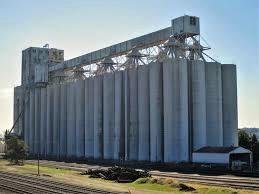 The FAS Export Report for soybeans covering the week ending April 25th reflecting market year 2023-2024, recorded outstanding export orders amounting to 3.53 million metric tons (129.8 million bushels). Net orders this past week attained 0.41 million metric tons (15.2 million bushels). Shipments for the past working week attained 0.27 million metric tons (9.88 million bushels). For the current market year to date cumulative exports of 38.37 million metric tons (1,410 million bushels) are 18.5 percent lower compared to the equivalent week of the previous market year. Outstanding orders for the 2024-2025 market year amount to 0.86 million metric tons metric tons (31.60 million bushels) with 7,000 tons ( 0.26 million bushels) ordered this past week. The FAS Export Report for soybeans covering the week ending April 25th reflecting market year 2023-2024, recorded outstanding export orders amounting to 3.53 million metric tons (129.8 million bushels). Net orders this past week attained 0.41 million metric tons (15.2 million bushels). Shipments for the past working week attained 0.27 million metric tons (9.88 million bushels). For the current market year to date cumulative exports of 38.37 million metric tons (1,410 million bushels) are 18.5 percent lower compared to the equivalent week of the previous market year. Outstanding orders for the 2024-2025 market year amount to 0.86 million metric tons metric tons (31.60 million bushels) with 7,000 tons ( 0.26 million bushels) ordered this past week.
(Conversion 36.74 bushels per metric ton)
For the week ending April 25th 2023 outstanding orders for soybean meal and cake attained 2.80 million metric tons. Net orders this week for soybean meal and cake amounted to 131,000 metric tons. During the past week 295,800 metric tons of meal and cake combined was shipped. The quantity exported to date is 17.7 percent higher than the volume for the corresponding weeks of the previous market year. For the next market year outstanding sales have attained 347,700 metric tons with 3,400 tons ordered this past week.
The April 11th 2024 WASDE #647 projected:-
- Corn area planted for all purposes in 2024 (‘new crop’) will attain 94.6 million acres, down 0.3 from last year. According to the April WASDE, yield was projected at 177.3 bushels per acre with a resulting production of 15,342 million bushels with 2,122 million bushels as ending stock. The USDA retained the average ex-farm price to 470 cents per bushel for the 2024 crop.
- Soybean area to be planted for 2024 will attain 83.6 million acres, unchanged from 2023. According to the April WASDE, yield was predicted at 50.6 bushels per acre with production of 4,165 million bushels with 340 million bushels as ending stock. The USDA reduced the average season price to 1,255 cents per bushel.
- Crushers are expected to produce 54.25 million tons of soybean meal. Ending stocks will attain 400,000 tons. The USDA held the average projected price at $380 per ton.
The Prospective Plantings Report released on March 28th represents the first official, estimate of 2024 planting intentions by U.S. farmers. Acreage estimates are based on surveys conducted during the first half of March from a sample of nearly 72,000 farmers across the nation.
- Corn
- Farmers intend to plant 90.0 million acres of corn in 2024, down five percent from last year. Planted acreage intentions for corn are down or unchanged in 38 of the 48 estimating states. Acreage decreases of 300,000 acres or more from last year are expected in seven Midwest states and Texas.
- Soybeans
- Farmers intend to plant 86.5 million acres in 2024, up three percent from last year. Acreage increases from last year of 100,000 or more are expected in 12 states.
The preference for planting corn over soybeans in 2024 was based on a favorable projection of the corn to soy benefit ratio.
COMMODITY PRICES
The following quotations for the months of delivery as indicated were posted by the CME at 12H00 EDT May 2nd 2024, compared with values at 12H00 on April 25th 2024 (in parentheses): -
|
COMMODITY
|
|
|
Corn (cents per bushel)
|
May 447 (438)
|
July 455 ( 449)
|
|
Soybeans (cents per bushel)
|
May 1,188 (1,155)
|
July 1,189 (1,171)
|
|
Soybean meal ($ per ton)
|
May 353 (341)
|
July 360 (345)
|
Changes in the price of corn, soybeans and soybean meal over five trading days this past week were:-
Corn: May quotation up 9 cents per bushel. (+2.1 percent)
Soybeans: May quotation up 33 cents per bushel (+2.9 percent)
Soybean Meal: May quotation up $12 per ton (+3.5 percent)
The CME spot prices for feedstuffs per short ton at close of trading on May 1st 2024 with prices for the previous week were:-
- Corn (ZC): $161 per ton, up $1 per ton (+0.6 percent) from the previous week. 52-week range $149 to $233
- Soybean Meal (ZM): $351 per ton, was $348. Up $3 per ton (+0.9 percent) from the previous week. 52-week range $323 to $495
Values for other common ingredients per short ton:-
- Meat and Bone Meal, (According to the USDA National AnimalBy-product Feedstuffs Report on April 26th: Range $330 to $430 with an average of $383 per ton for porcine (ex MN), down 8.8 percent from last week; $305 to $335 per ton (Av. $320 per ton) for ruminant (ex MN) unchanged from last week. Price varies according to plant and location
- According to the USDA National Mill-Feeds andMiscellaneous Feedstuffs Report on April 26th wheat middlings from St. Louis, MO. and other locations: $95 to $125 per ton (Av. $107 per ton) up $2 per ton (+1.9 percent) from the previous week
- According to the National Grain and Oilseed Processor Feedstuffs Report on April 26th DDGS, (IA.) the range was unchanged at $145 to $195 (Av. $161 per ton, up $1 per ton (_0.6 percent) from the previous week reflecting stable to slightly lower corn prices. The average Pacific Northwest price was $268 per ton. Price varies according to plant and location and is expected to fluctuate with the price of corn
- University of Missouri Extension Service By-Product Feed Price Listing for April
- Bakery Meal, (MO & TX): $150 per ton.
- Rice Bran, (AR & CA): $120 to $200 per ton. (Av. $160).
For each $1 per ton (2.8 cents/bushel) change in corn the cost of egg production would change by 0.11 cent per dozen
For each $10 per ton change in the price of soybean meal the cost of egg production would change by 0.35 cent per dozen
There was a 0.2 cent per dozen increase in the nest-run production cost for eggs this past week, compared to April 25th due to rises in the spot prices of corn and soybean meal
ENERGY
The October 19th 2023 U.S. Energy Information Administration (U.S. EIA) report estimated that fuel ethanol blending would average 980,000 barrels per day in 2024, down 2.0 percent from 2023. For the week ending April 26th, 85.7 percent (82.8 percent for the previous week) of the U.S. ethanol fermentation volume was operational, based on January 2023 U.S. EIA capacity of 1,152 million barrels per day. The outlook for increased production will depend on higher domestic demand, from summer driving and the emergency waiver to dispense E15 blend during summer in addition to increasing the limited quantity exported comprising approximately nine percent or the production equivalent to 2.8 days.
During February 2024 (the last month for which US Energy Information Administration data is available) ethanol exports were down 7.4 percent from the previous month to 141.3 million gallons (3.817 million barrels). Importing nations and regions of significance and their proportions of total volume (rounded) for the month included:- 34.3 percent to Canada; percent to India; 22.3 percent to Europe; 17.8 percent to Central, South America and the Caribbean; 11.3 percent to Asia and the Middle East, predominantly South Korea;; 4.2 percent to Mexico.
According to the U.S. EIA, for the week ending April 26th 2024 the industry produced on average 987,000 barrels of ethanol per day, up 3.5 percent from the week ending April 19th and below the one million gallon per day benchmark for the third consecutive week.
On April 26th ethanol stock was down 1.0 percent from the previous week to 25.5 million barrels, an approximately 24-day reserve. This past week demonstrated slightly higher demand for ethanol, given relative changes in the weekly production level (output up 3.5 percent and inventory down 1.0 percent over the most recent week)
Current Energy Prices:-
- The price of WTI was down $3.33 per barrel, (-4.0 percent) to $82.33 per barrel on April 24th compared to the previous week. This represents a technically oversold position due to a disparity between supply and demand with a build in inventory. WTI is up 8.1 percent year to date. Issues affecting price last week included an easing in the conflict premium for Middle East crude. Disruption of shipping in the Red Sea continues resulting in an escalation in bulk and liquid sea-freight. An OPEC+ production cut that commenced in July 2023 in addition to a voluntary one-million barrel per day reduction by Saudi Arabia announced on June 4th was extended through June 2024 although it is questioned whether all members of OPEC will comply. At the April 3rd OPEC+ Meeting Ministers decided to retain current supply policy and encouraged compliance by members with respect to supply cuts.
The ending stock of crude held at Cushing OK. on April 26th was up 3.4 percent from last week to 33.5 million barrels and 21.9 percent down from the annual high on June 23rd 2023. Hydrocarbon sources of energy contributed materially to inflation in the third quarter compared to the previous quarter of 2023 but was an important contributor to deflation in the fourth quarter of 2023. On April 26th Baker Hughes reported 613 rigs were in operation in the U.S. down from 619 on April 19th 2024 compared to 755 during the corresponding week in 2023. U.S. crude production averaged 12.9 million barrels per day in March. Consensus estimates for WTI price through the remainder of 2024 average $76.50.
- Ethanol quoted on the CME (EH) on May 1st was priced at $2.16 per gallon, unchanged for months due to lack of trading activity. The 52-week range is $2.14 to $2.19 per gallon.
- On May 1st RBOB gasoline traded on NASDAQ (RB) at $2.58 per gallon, down 10 cents per gallon (-3.7 percent) from the previous week. Despite the change this week prices rises are becoming more evident in CME trading and ultimately at the pump. The 52-week range for RBOB gasoline is $1.98 to $2.96.
- The AAA national average regular grade gasoline price was $3.66 per gallon on May 1st, unchanged from last week. Gasoline is now $1.50 per gallon more expensive than ethanol but has a 63 percent higher BTU rating. Future rises in fuel cost are inevitable given the prospects for a rise in benchmark WTI
- The AAA national average diesel price was $4.01 per gallon on May 1st, down 2 cents (-0.5 percent) from the previous week but with prospects for future increases due to an extremely low national stock and the rising price of WTI. Increases are currently restrained by a decline in the trucking industry.
- CME Henry Hub natural gas was priced at $1.96 per MM BTU on May 1st down 2 cents (-1.0 percent) from the previous week on lower demand due to milder weather. Gas prices are depressed following an Administration embargo on new LNG export terminals.
INGREDIENTS
DDGS is freely available with most plants among the 192 operational on January 1st 2023 (the last available estimate) with a combined capacity of 1,152 million barrels per day functioning at a sharply reduced national average 85.7 percent compared to 85.3 percent last week. The April 26th USDA National Grain and Oilseed processor Feedstuffs Report priced DDGS from Iowa plants at $145 to $190 per ton, with an average of $161 per ton. Wide variation in price exists depending on supplier, quantity and location. It is axiomatic that the cost of DDGS will reflect changes in the price of corn with an appropriate lag period. Generally DDGS is currently incorporated at moderate inclusion levels in egg-production formulas based on price relative to the nutrient contribution of corn and other ingredients. This will change as corn and hence DDGS fluctuate in price
The CME soybean price for May 2024 delivery at noon on May 2nd was up 2.9 percent to 1,188 cents per bushel. The current price of soybeans is a reflection of availability for domestic crushing to produce oil, consumption and export orders. Soybean meal was up 3.5 percent on the CME to $353 per ton for May 2024 delivery. Prices of soybeans are obviously influenced by projections of harvest in the three major producing nations in South America, the projected 2024 harvest in the U.S. coupled with domestic demand for soy oil, biodiesel and meal.
According to a release on April 15th by the National Oilseed Processors Association, whose membership process 95 percent of the U.S. crop, the soybean crush for March 2024 attained 196.4 million bushels of soybeans, lower than the consensus estimate of 197.8 million bushels. This was a new monthly record and up 5.7 percent from March 2023. Crush volume was up 5.5 percent from February 2024 at 186.2 million bushels and 0.6 percent above the previous record crush of 195.3 million bushels in December 2023. April crush data will be posted in the May 17th 2024 edition of EGG-NEWS.
On May 1st the CME spot price for soybean oil was down a substantial 1.8 cents per lb. (-4.0 percent) from the previous week to 43.0 cents per lb. Prices for vegetable oils have fluctuated over a narrow range in past weeks but have decreased with recent higher supply. Asian crude palm oil was also lower this past week on profit taking. It is anticipated that 41 percent of U.S. soy oil was diverted from fuel to biodiesel during 2022 and this proportion will be exceeded in 2023 paralleling the situation in Brazil.
On May 1st the CME soybean meal spot price was $351 per ton, $3 per ton higher than the spot price last week and compared to a 52-week range of $323 to $474 per ton.
On April 26th Meat and Bone meal (ruminant) was quoted over a range of $305 to $335 per ton (Av. $320 per ton) and porcine over a range of $330 to $430 per ton with an average of $383 per ton according to the USDA National Animal By-product Feedstuffs Report, Prices quoted were for Minnesota plants but with a wide range based on composition, source and location. Price fluctuation reflects changes in soybean meal and other oilseed meals.
On April 24th conversion of the CNY to the BRL was BRL 0.74, down CNY 0.02 from last week. The conversion of the CNY to the US$ was CNY 7.24, up CNY 0.01 from the previous week despite a rising Dollar Index.
For consecutive calendar years 2017 through 2019 the U.S. supplied 34.4 percent of soybean requirements for China amounting to 95.5 million metric tons. This was followed by a decline to 16.9 percent of 88.5 million metric tons in 2018 and 16.6 percent of 88.0 million metric tons in 2019. The USDA anticipated that soybean imports by China would attain 95.0 million metric tons during the 2020-2021 market year but in reality only 60.3 million tons was shipped through August 2021.
For the 2021-2022 market year net export sales of corn were down 21.5 million metric tons (844 million bushels) compared to the previous market year with cumulative exports of 38.3 million metric tons (1,507 million bushels)
For the 2022-2023 market year net export sales of soybeans were down 5.6 million metric tons (206 million bushels) compared to the previous market year with cumulative exports of 51.5 million metric tons (1,893 million bushels)
For Market year 2022-2023 ending September 2023, a record 13.2 million metric tons of soybean meal and cake was exported valued at $7 Billion. Expansion in exports was attributed to orders from The E.U., Asia (Viet Nam) and Latin America. Crush volume was driven by the demand for soy oil to produce biodiesel fuel.
During calendar 2023, 46.0 million metric tons (1,810 million bushels) of corn were exported from the U.S., valued at $13,140 million. The top five importers with their respective values expressed as a percentage were:- Mexico, 40.9; Japan, 15.8; China, 12.5; Colombia, 8.6 and Canada, 5.1.
During calendar 2023, 49.0 million metric tons (1,800 million bushels) of soybeans were exported from the U.S., valued at $29,910 million. The top five importers with their respective values expressed as a percentage were:- China, 50.6; E.U., 12.0; Mexico, 9.3; Japan, 4.3; Indonesia, 4.1; Taiwan, 2.0 and Egypt, 1.6.
COMMENT
Subscribers are referred to the December 8th 2023 WASDE #643 for the 2023 harvest. The preliminary USDA projection for 2024 harvests is included in the April 11th WASDE #647, retrievable under the STATISTICS tab. The USDA Planted Acreage Report and the quarterly Grain Stocks Report are posted under the STATISTICS Tab.
Following cancellation of the Black Sea Grain Initiative (BSGI) Ukraine commenced limited shipment of commodities from the three main Black Sea and Danube Delta ports that remain functional. Projected harvest during the 2022/2023 season will amount to 49.0 million metric tons, 42 percent lower than for 2021/2022. Exports were projected to attain 38.1 million metric tons, 26.5 percent lower than the previous market year.
Either more intense action by Ukraine, a negotiated peace treaty with concessions to the Russian Federation, or their combination will be required to restore unrestricted shipping in the Black Sea. Increasing passage along the costal-route (“Humanitarian Corridor”) has allowed sea-transport of commodities since early August to supply Asia and Africa.
Increased multinational naval activity has commenced in the Bab al-Mandeb Strait at the southern end of the Red Sea to restore shipping through the Red Sea and the Suez Canal that carries 15 percent of world sea-freight. Some shipping lines including Maersk of Denmark, Hapag-Lloyd of Germany and CMA of France have suspended transit of the Suez Canal and the Red Sea awaiting a clear resolution of the danger from missiles. Traffic through the Suez Canal is down 40 percent from September 2023. Restoring free passage will require destruction of Houthi bases, radar and command installations and mobile launching equipment on the soil of Yemen in addition to interdicting re-supply from Iran. This is in progress.

|
Crop Progress
|
|
Status of the 2024 Corn and Soybean Crops
The USDA Crop Progress Report released on April 29th documented planting for the 2024 soybean and corn season. Farmers are in fields with relatively dry conditions in half of the eight major states producing corn and soybeans allowing rapid seeding of prepared acreage. The “big-eight” (IL, IN, IA, KS, MI, MN, NE and OH) collectively averaged 4.0 (last week 3.5) days suitable for field work this past week ranging from 3.1 days (OH) to 5.2 days (KS)
Based on the sum of the “adequate” and “surplus” categories, surface and subsoil moisture levels were higher than the corresponding week in 2023. For the past week surface and subsoil moisture values were 75 and 71 percent for the two highest categories of ‘Adequate’ and ‘Surplus’. These levels were higher than the previous year with values of 72 and 62 percent respectively for the two highest categories, demonstrating an acceptable pre-planting situation.
It is to early in the expected transition to a La Nina event to predict any impact on crop condition in coming months. If prolonged dry and hot weather in corn and soy areas occurs, yield will be depressed depending on timing and severity. A long-range forecast in the form of two charts is provided predicting rainfall and temperature during the growing season.
Reference is made to the April 11th WASDE Report #647 under the STATISTICS TAB and the weekly Commodity, Economy and Energy Report in this edition, documenting acreage to be harvested, yields, weekly prices and ending stocks.
| |
WEEK ENDING |
|
|
Corn Status (18 states)
|
March 31st 2024
|
April 7th 2024
|
5-Year Average
|
|
Corn Planted (%)
|
12
|
27
|
22
|
|
Corn Emerged (%)
|
3 |
7 |
4 |
| |
|
|
|
| Soybean Status (18 states) |
|
|
|
|
Soybean planted (%)
|
8
|
18
|
10
|
| |
|
|
|
|

|
|
|
Crop Condition
(pending USDA reports)
|
V. Poor |
Poor
|
Fair
|
Good |
Excellent |
|
Corn 2024 (%)
|
|
|
|
|
|
| Corn 2023 (%) |
|
|
|
|
|
| |
|
|
|
|
|
|
Soybeans 2024 (%)
|
|
|
|
|
|
| Soybeans 2023 (%) |
|
|
|
|
|
|
|
|
|
Parameter 48 States
|
V. Short |
Short
|
Adequate
|
Surplus |
| Topsoil Moisture: |
|
|
|
|
|
Past Week
|
6
|
19
|
62
|
13
|
| Past Year |
10 |
18 |
60 |
12 |
| Subsoil Moisture: |
|
|
|
|
|
Past Week
|
7
|
22
|
61
|
10
|
| Past Year |
13 |
20 |
57 |
10 |
| |
|
|
|
|
|
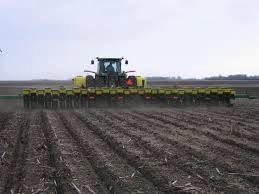 |
|
|
EGG-NEWS will report on the progress of the two major crops as monitored by the USDA through to the end of the 2024 harvest in November.

|
Cooper Farms Donates $50,000 to Mercer Health
|
|
 In an April 17th announcement, Cooper Farms donated $50,000 to a new obstetrical facility to be included in the renovated Mercer County Community Hospital. The project to allow for in-county specialist obstetrical services and neonatal care was initiated with $1 million donation from the Walter and Evelyn Braun family trust. The Cooper Farms donation was included in an amount of $600,000 provided by philanthropic residents. In an April 17th announcement, Cooper Farms donated $50,000 to a new obstetrical facility to be included in the renovated Mercer County Community Hospital. The project to allow for in-county specialist obstetrical services and neonatal care was initiated with $1 million donation from the Walter and Evelyn Braun family trust. The Cooper Farms donation was included in an amount of $600,000 provided by philanthropic residents.
Ms. Deb Hemmelgarn, Director of the MED Foundation at Mercer Health commented, “ A successful campaign will ensure adequate funds to initiate the project. Childbirth centers continue to close throughout Ohio and the Nation. We are enhancing our services because of our commitment to our community”.
|
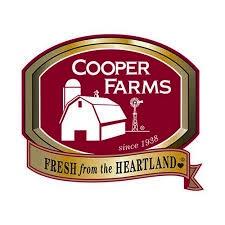
 |

|
Hotraco Agri to Present Seminar on Egg-collection Systems
|
|
 Hotraco Agri will present an open seminar in Portland, IN. on June 6th at the Holiday Inn Express and Suites. The program will feature Hotraco Central Egg Collection and a new Egg Flow Control System. Hotraco Agri will present an open seminar in Portland, IN. on June 6th at the Holiday Inn Express and Suites. The program will feature Hotraco Central Egg Collection and a new Egg Flow Control System.
 Speakers will include Frank Schreurs, Sale Director and Eric Hagens, Product Manager at Hotraco. Topics to be reviewed include technology of egg collection to achieve optimal egg flow. Speakers will include Frank Schreurs, Sale Director and Eric Hagens, Product Manager at Hotraco. Topics to be reviewed include technology of egg collection to achieve optimal egg flow.  These aspects of the management of in-line complexes are important in reducing shell downgrades and also attaining high grader efficiency to reduce labor costs. For further information and registration access www.hotraco-agri.com These aspects of the management of in-line complexes are important in reducing shell downgrades and also attaining high grader efficiency to reduce labor costs. For further information and registration access www.hotraco-agri.com

|
WunderEggs Wins Albertsons Innovation Contest
|
|
 Crafty Counters, Inc. producers of WunderEggs won the second Annual Innovation Launchpad at the Natural Products, Expo-West held in Anaheim, CA. The product comprises a plant-based egg substitute containing almonds, coconut milk, spices, and salt. From the illustration the product resembles the plastic food displayed in front windows of restaurants in Japan Crafty Counters, Inc. producers of WunderEggs won the second Annual Innovation Launchpad at the Natural Products, Expo-West held in Anaheim, CA. The product comprises a plant-based egg substitute containing almonds, coconut milk, spices, and salt. From the illustration the product resembles the plastic food displayed in front windows of restaurants in Japan
 Recognition of the product together with a $163,000 prize from Albertson’s Corp has increased awareness of WunderEggs and has generated orders. Recognition of the product together with a $163,000 prize from Albertson’s Corp has increased awareness of WunderEggs and has generated orders.
The question remains as to the price of the product and also nutritional value compared to real eggs. It is understood that WunderEggs is available as a hard-boiled presentation that limits servings that could be achieved with conventional eggs and egg liquids.

|
Zipline Completes One Million Drone Deliveries
|
|
 Zipline, a pioneer in drone delivery, has announced completion of one million deliveries on behalf of major retailers including Walmart and various health systems. Zipline recently entered into agreements with Panera Bread and Jet’s Pizza for home deliveries in select markets. Zipline, a pioneer in drone delivery, has announced completion of one million deliveries on behalf of major retailers including Walmart and various health systems. Zipline recently entered into agreements with Panera Bread and Jet’s Pizza for home deliveries in select markets.

By the end of summer, Zipline will have expanded delivery to serve 30 million in ten states.

|
Sanovo Training Program
|

|
Chipotle Posts Q1 FY 2024 Results
|
|
In an April 24th release, Chipotle Mexican Grill (CMG) reported on the 1st quarter of fiscal 2024 ending March 31st.

For the period, the company earned $359 million on total revenue of $2,702 million including delivery payments, generating a diluted EPS of $13.01. For comparable Q1 of fiscal 2023, Chipotle earned $292 million on total revenue of $2,369 million with a diluted EPS of $10.50.
Total revenue increased by 14.1 percent over Q1 FY 2023 and comparative same store sales were up by 7.0 percent. Digital sales represented 37 percent of revenue in the most recent quarter. Operating margin increased from 25.6 percent to 27.5 percent in Q1 2024.

During the Q1, Chipotle opened 47 new stores, with 43 equipped for drive-through service. Chipotle operates 3,484 stores with average sales of $3.1 million.
In commenting on results, Brian Niccol, Chairman and CEO stated "We had another outstanding quarter driven by our improvement in throughput and successful marketing initiatives, including Braised Beef Barbacoa and Chicken Al Pastor, which drove strong sales and transactions. The results we are seeing from our focus on developing exceptional people, preparing delicious food and fast throughput gives me confidence that we can achieve our long-term target of more than doubling our business in North America and expanding internationally,"
For 2024 Management projected a sales increase of “mid to high single digits,” a range of 285 to 315 new stores with 80 percent equipped for drive through delivery.

On March 31st Chipotle Mexican Grill posted assets of $8,411 million with long-term lease obligations of $3,903 million. Market capitalization was $87,540 million on April 26th. During the past 52-weeks, CMG has traded over a range of $1,540 to $3,200 with a 50-day moving average of $2,817. CMG closed pre-release on April 24th at $2,933 but rose on the open on April 25th post-release to $3,000, rising subsequently with the market to close at $3,188 on April 26th. On a trailing twelve-month basis, operating margin was 16.5 percent and profit margin 12.7 percent. The Company generated returns of 13.5 percent on assets and 44.4 percent on equity.

|
Restaurant Brands International Posts Q1 FY 2024 Financial Results
|
|
In an April 30th release, Restaurant Brands International Inc. (QSR) posted financial results for the 1st quarter of FY 2024. Along with other QSRs and casual dining competitors, the Company and its franchisees among five operating divisions are subject to the pressures of increased costs for food, packaging and labor in a competitive environment restrained by inflation that is impacting discretionary spending by consumers. The newly formed International Division faces geopolitical headwinds and the challenges of currency fluctuation.

For the 1st Quarter of FY 2023 ending March 31st 2024 the Company attained revenue consistent with consensus estimates but beat on EPS. Net income was $328 million on total revenue of $1,739 million. Comparable figures for the 1st quarter of FY 2023 were net income of $272 million on total revenue of $1,590 million. Diluted EPS attained $0.72 for the most recent quarter compared to $0.61 for the corresponding 1st quarter of FY 2023.
For the 1st quarter, system-wide sales increased by 9.4 percent. Comparing Q1 FY 2023 with Q1 2024, operating margin increased from 25.1 percent to 31.2 percent for the most recent quarter.
Segment results comprised:-
Tim Horton’s: Sales, $1,725 million; adjusted operating income (AOI), $224 million; Comparable store sales increase, 6.9 percent with 4,505 stores
Burger King: Sales $2,753 million; AOI, $106 million; Comparable store sales increase 3.8 percent with 7,139 stores
Popeye’s LA Kitchen: Sales, $1,517 million; AOI, $58 million; Comparable store sales increase, 5.7 percent with 3,412 stores
Firehouse Subs: Sales, $301 million; AOI, $10 million; Comparable store sales increase, 0.3 percent with 1,277 stores.
International: Sales, $4,216 million; AOI, $142 million; Comparable store sales increase, 4.2 percent with 14,780 stores
 Josh Kobza , CEO of RBI commented Josh Kobza, Chief Executive Officer of RBI commented, "I am proud of the hard work our teams and franchisees are doing to deliver high-quality products, great service and a compelling value proposition for guests every day. Our results are a reflection of their efforts and the strong foundation we have built that sets us up to drive continued improvements in franchisee profitability and deliver our long-term outlook." Josh Kobza , CEO of RBI commented Josh Kobza, Chief Executive Officer of RBI commented, "I am proud of the hard work our teams and franchisees are doing to deliver high-quality products, great service and a compelling value proposition for guests every day. Our results are a reflection of their efforts and the strong foundation we have built that sets us up to drive continued improvements in franchisee profitability and deliver our long-term outlook."
On March 31st 2023, QSR posted assets of $23,145 million of which $16,672 million comprised goodwill, lease obligations and intangibles against long-term debt and leases of $15,077 million. The Company had an intraday market capitalization of $23,370 million on April 30th. QSR trades with a forward P/E of 15.5 and has ranged over a 52-week period from $61.77 to $83.29 with a 50-day moving average of $76.60. On April 29th QSR closed at $$73.85 but opened higher post release closing on April 30th at $76.13. Twelve-month trailing operating margin was 27.0 percent and profit margin 17.0 percent. Return on assets over the trailing twelve months was 5.8 percent and the return on equity 38.2 percent.

|
McDonald’s Corporation Reports on Q1 FY 2024
|
|
 In a pre-open release dated April 30th 2024 McDonald’s Corporation, a bellwether for the QSR segment of the restaurant industry, reported results for the 1st quarter of FY 2024 ended March 31st 2024.The Company disappointed on revenue, earnings and sales growth. For the period, the Company earned $1,929 million on total revenue of $6,169 million with a diluted EPS of $2.66. Comparable figures for the 1st quarter of fiscal 2023 were net income of $1,802 million on total revenue of $5,898 million with a diluted EPS of $2.45. In a pre-open release dated April 30th 2024 McDonald’s Corporation, a bellwether for the QSR segment of the restaurant industry, reported results for the 1st quarter of FY 2024 ended March 31st 2024.The Company disappointed on revenue, earnings and sales growth. For the period, the Company earned $1,929 million on total revenue of $6,169 million with a diluted EPS of $2.66. Comparable figures for the 1st quarter of fiscal 2023 were net income of $1,802 million on total revenue of $5,898 million with a diluted EPS of $2.45.
Revenue for Q1 fell by 4.6 percent but operating margin advanced from 42.9 percent for Q1 of 2023 to 44.3 percent for the most recent quarter. Gross margin for Company-operated stores was unchanged at 13.5 percent for both quarters attributed food ingredient deflation and control of costs for packaging, rationalization of menus to offset increased labor cost. The Accelerating the Arches efficiency initiative, maintained traffic assisted by the benefit of promotions. The Company may be benefitting from trade-down from restaurant dining in the demographic with an annual income of $100,000.
 In commenting on results, Chris Kempczinski, president and CEO stated, “Our global comparable sales growth in the first quarter marks 13 consecutive quarters of positive comparable sales growth with 30% growth over the last 4 years,” He added “As consumers are more discriminating with every dollar that they spend, we will continue to earn their visits by delivering leading, reliable, everyday value and outstanding execution in our restaurants. As we look to the rest of 2024 and beyond, we remain focused on leveraging the competitive advantages within our Accelerating the Arches plan and growing QSR market share to drive long-term growth.” In comments on the investor call Kempczinsky stated “Consumers continue to be even more discriminating with every dollar that they spend as they faced elevated prices in their day-to-day spending, which is putting pressure on the QSR industry." This suggests that McDonald’s and competitors have reached a limit with increases in menu prices consistent with a divergence in cost of food-at-home and in QSRs and casual dining restaurants. In commenting on results, Chris Kempczinski, president and CEO stated, “Our global comparable sales growth in the first quarter marks 13 consecutive quarters of positive comparable sales growth with 30% growth over the last 4 years,” He added “As consumers are more discriminating with every dollar that they spend, we will continue to earn their visits by delivering leading, reliable, everyday value and outstanding execution in our restaurants. As we look to the rest of 2024 and beyond, we remain focused on leveraging the competitive advantages within our Accelerating the Arches plan and growing QSR market share to drive long-term growth.” In comments on the investor call Kempczinsky stated “Consumers continue to be even more discriminating with every dollar that they spend as they faced elevated prices in their day-to-day spending, which is putting pressure on the QSR industry." This suggests that McDonald’s and competitors have reached a limit with increases in menu prices consistent with a divergence in cost of food-at-home and in QSRs and casual dining restaurants.
For the fourth quarter of FY 2023, McDonald’s posted comparable store sales growth in the U.S. of 2.5 percent with comparable store sales growth for the international operated markets segment of 2.7 percent and with global comparable store sales growth of 1.9 percent. The International Developmental Licensed Market Segment posted a 0.2 percent decline in comparable sales due to turbulence in the Middle East but offset by South Korea and Japan.
Projections for 2024 in the SEC 8K report included net restaurant expansion contributing 2.0 percent to system wide sales with an operating margin of mid to high 40 percent. On December 31st 2023 there were 41,822 McDonald’s locations. Restaurant breakdown included 13,457, U.S.; 10,263 International operated and 18,102, International Developmental Licensed. During 2024 the Company intends to open 1,600 new restaurants globally. According to the report most will be traditional in design but the Company will consider alternatives including a test of a small free-standing ‘CosMC’ format.
McDonald’s Corporation had a market capitalization of $197,230 million on April 30th 2024. Total assets on December 31st 2023 amounted to $56,146 million of which 24.0 percent comprised lease right-of-use assets. Long-term debt and lease obligation were $50,211 million. MCD has ranged over the past 52-weeks from $245.73 to $302.39 with a 50-day moving average of $281.51. MCD trades with a forward P/E ratio of 21.9. The 12-month trailing operating margin was 43.6 percent and profit margin, 33.2 percent. Return on assets was 13.7 percent. Prior to release MCD closed on April 29th at $273.46 but opened lower, post-release on April 30th at $269.16, regaining the loss by noon on a down-market.

|
Bunge Posts Q1 FY 2022 Financial Results
|
|
 In an April 24th release, Bunge Limited (BG) posted financial results for the 1st quarter of Fiscal 2024. This Company can be regarded as a bellwether for ‘Mega-Ag’ and the commodities sector. Along with competitors ADM, Cargill, Cofco and Dreyfus, all are subject to the risks of currency fluctuation, geopolitical events, climatic extremes, and increased cost of ingredients, labor and transport in a competitive world environment still restrained by COVID and conflict in the Ukraine. In an April 24th release, Bunge Limited (BG) posted financial results for the 1st quarter of Fiscal 2024. This Company can be regarded as a bellwether for ‘Mega-Ag’ and the commodities sector. Along with competitors ADM, Cargill, Cofco and Dreyfus, all are subject to the risks of currency fluctuation, geopolitical events, climatic extremes, and increased cost of ingredients, labor and transport in a competitive world environment still restrained by COVID and conflict in the Ukraine.
For the 1st Quarter of FY 2024 ending March 31st, net income was $344 million on total revenue of $13,417 million. Comparable figures for the 1st quarter of fiscal 2023 ending March 31st were net income of $632 million on total revenue of $15,328 million. Diluted EPS fell from $4.29 for the 1st quarter of fiscal 2023 to $1.68 for the most recent quarter. Revenue was down 12.5 percent from Q1 2023. Gross margin declined from 7.7 to 6.5 percent and operating margin fell from 5.4 to 3.3 percent for the most recent quarter compared to Q1 FY 2023.
The Agribusiness segment generated sales of $9,740 million with an EBIT contribution of $454 million; Oils and Refining with revenue of $3,240 and a EBIT contribution of $359 million; Milling revenue of $381 million with EBIT contribution of $60 million.
 In commenting on results Greg Heckman, CEO, commented “We are pleased with our first quarter results, which reflect our team’s strong execution in a more balanced market environment. During the quarter we invested further in our pipeline of growth projects and made excellent progress on integration planning for our announced combination with Viterra.” In commenting on results Greg Heckman, CEO, commented “We are pleased with our first quarter results, which reflect our team’s strong execution in a more balanced market environment. During the quarter we invested further in our pipeline of growth projects and made excellent progress on integration planning for our announced combination with Viterra.”
“While we are off to a strong start, we continue to have limited visibility into the back half of the year. However, we are confident in our team’s ability to stay agile and capture opportunities ahead of us as we remain focused on delivering on our mission of connecting farmers to consumers to deliver essential food, feed and fuel to the world.”
Bunge projected FY 2024 adjusted EPS at $9.00 based on stated headwinds and segment performance.
On March 31st 2024, Bunge posted assets of $25,821 million, against long-term debt and other obligations of $5,863 million. The Company had an intraday market capitalization of $14,550 million on April 29th. BG trades with a forward P/E of 11.3 and has ranged over a 52-week period from $80.11 to $116.59 with a 50-day moving average of $103.18. Twelve-month trailing operating margin was 3.7 percent and profit margin 3.2 percent. Return on assets over the past twelve months was 7.0 percent and the return on equity 17.4 percent.

|
E15 Availability during Summer
|
|
 The Environmental Protection Agency has approved an emergency waiver to allow E-15 blend to be sold through the summer of 2024. The waiver will constrain escalation in price of gasoline albeit be with a deterioration in miles per gallon based on the lower energy value of ethanol compared to gasoline. The Environmental Protection Agency has approved an emergency waiver to allow E-15 blend to be sold through the summer of 2024. The waiver will constrain escalation in price of gasoline albeit be with a deterioration in miles per gallon based on the lower energy value of ethanol compared to gasoline.
 The restraints to uptake of higher ethanol blends include incompatibility with older vehicles, limitations on the number of available multi-blend fuel dispensers and the need for additional storage tanks at depots and gas stations. The restraints to uptake of higher ethanol blends include incompatibility with older vehicles, limitations on the number of available multi-blend fuel dispensers and the need for additional storage tanks at depots and gas stations.

|
United Natural Foods Enjoined from Outsourcing Deliveries
|

 |
The National Labor Relations Board (NLRB) has ruled that United Natural Foods Inc. (UNFI) cannot outsource driver positions to non-union companies including J.B. Hunt in Florida. United Natural Foods entered into an agreement with the trucking company following an attempt at unionization by drivers. The NLRB issued its decision based on the lack of “pertinent evidence that the 80 truck drivers would not be laid off”. The Board has demonstrated a decided tilt towards unions under the current Administration. issued its decision based on the lack of “pertinent evidence that the 80 truck drivers would not be laid off”. The Board has demonstrated a decided tilt towards unions under the current Administration.
Tom Erickson of the Teamsters Union, Warehouse Division stated, “The UNFI attempt to outsource jobs was nothing more than a desperate union-busting tactic to stop drivers from becoming Teamsters.” He added, “This ruling reaffirms workers’ right to representation in the workplace without interference from management.”
|

|
Rep. David Scott Urges Bipartisan Approach to Farm Bill
|
|
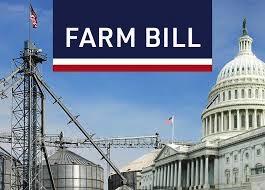 Representative David Scott (D-GA) has urged compromise with respect to passage of the delayed farm bill. At issue is a demand by the majority members of the House Agricultural Committee to cut $30 billion from the Thrifty Food Plan and also to transfer funding from land conservation to support crop subsidies. The majority is also promoting a bipartisan approach to apply Commodity Credit Corporation funds for livestock and crop support in the event of national disasters or trade wars. Representative David Scott (D-GA) has urged compromise with respect to passage of the delayed farm bill. At issue is a demand by the majority members of the House Agricultural Committee to cut $30 billion from the Thrifty Food Plan and also to transfer funding from land conservation to support crop subsidies. The majority is also promoting a bipartisan approach to apply Commodity Credit Corporation funds for livestock and crop support in the event of national disasters or trade wars.
 A 22-year member of the House Agriculture Committee, Rep. Scott “condemns the politics of division” and warns that the House will not approve a partisan bill, a clear message to Chairman, Rep. Glenn Thompson (R-PA) who intends moving the legislation out of Committee during May. A 22-year member of the House Agriculture Committee, Rep. Scott “condemns the politics of division” and warns that the House will not approve a partisan bill, a clear message to Chairman, Rep. Glenn Thompson (R-PA) who intends moving the legislation out of Committee during May.

|
Walmart Leads in Consumer Packaged Goods Sales
|

|
ADM Releases CFO
|
|
 Vikram Luthar currently on administrative leave will resign as CFO effective September 30th. At issue were accounting irregularities that are currently under investigation by the SEC. Luthar joined ADM from General Motors in 2004 and became CFO of the Nutrition Segment in 2020. In 2022 he was promoted to corporate CFO. Vikram Luthar currently on administrative leave will resign as CFO effective September 30th. At issue were accounting irregularities that are currently under investigation by the SEC. Luthar joined ADM from General Motors in 2004 and became CFO of the Nutrition Segment in 2020. In 2022 he was promoted to corporate CFO.
ADM was obliged to correct financial data extending back to 2018 due to incorrect inter-segment transfers that overstated performance. It is emphasized that the financial reports of the company were not affected by the intra-company irregularities.
 Juan Luciano, CEO stated, “The decision to move forward in this direction was made after careful consideration of the future of our Company and how to best position ADM for success.” The Company is now searching for a new CFO and plans to move on from the situation that resulted in a transitory decline in share price. Juan Luciano, CEO stated, “The decision to move forward in this direction was made after careful consideration of the future of our Company and how to best position ADM for success.” The Company is now searching for a new CFO and plans to move on from the situation that resulted in a transitory decline in share price.
On April 24th, ADM had a market capitalization of $31,000 million and has moved over the past 52-weeks from a low of $50.72 to $87.30 with a 50-day moving average of $58.44. The Company generated a trailing 12-month profit margin of 3.7 percent and achieved a return on assets of 3.4 percent.

|
Funding Available for Renewable Energy Products
|
|
 On Earth Day 2024, Deputy secretary of Agriculture, Xochitl Torres Small, announced funding for 700 projects including biofuels and clean energy. The USDA will provide $238 million through the Rural Energy for America Program (REAP) and the Higher Blends Infrastructure Incentive Program (HBIIP). On Earth Day 2024, Deputy secretary of Agriculture, Xochitl Torres Small, announced funding for 700 projects including biofuels and clean energy. The USDA will provide $238 million through the Rural Energy for America Program (REAP) and the Higher Blends Infrastructure Incentive Program (HBIIP).
REAP will provide $194 million to support 35 projects including installation of solar photovoltaic systems and a vertical farming project for strawberries.

USDA has distributed $2 billion under the REAP program. Accordingly, egg producers are urged to consider whether intended projects could fall within the objectives of REAP, thereby reducing operating costs.

|
DC Supermarkets Intensify Security Procedures
|
|
 Harris Teeter is the latest among Washington, D.C. supermarkets to impose stricter controls to reduce theft. Customers will now have to present receipts before leaving any of the three designated Harris Teeter stores. The company has also banned duffel bags, backpacks, and roller bags from the store. Harris Teeter is the latest among Washington, D.C. supermarkets to impose stricter controls to reduce theft. Customers will now have to present receipts before leaving any of the three designated Harris Teeter stores. The company has also banned duffel bags, backpacks, and roller bags from the store.

These restrictions follow similar action by Safeway, Giant and CVS. A Harris Teeter spokesperson noted that the policies were to “maintain a safe shopping experience”. This is euphemism for deterring potential shoplifters.

|
Kroger to Settle with Washington State Over Opioid Prescriptions
|
|

Bob Ferguson, Attorney General for the State of Washington has announced that The Kroger Company will pay $47.5 million to settle a lawsuit over widespread filling of ‘pill mill’ prescriptions. In December 2022 the state filed a lawsuit alleging “illegal, reckless and negligent filling of opioid orders without adequately investigating fraud or over-prescribing.” Kroger will pay the settlement figure over eleven years and the proceeds will be divided between the State of Washington, City and County agencies.
 In 2023 The Kroger Company settled with the State of West Virginia regarding overfilling of hydrocodone prescriptions resulting in a $68 million settlement. In 2023 The Kroger Company settled with the State of West Virginia regarding overfilling of hydrocodone prescriptions resulting in a $68 million settlement.
Litigation is in progress in Kentucky. Attorney General Russell Coleman claims that between 2006 and 2019 the 100 pharmacies operated by Kroger in the region dispensed 444 million doses representing eleven percent of all opioid pills marketed. The lawsuit alleges that Kroger ignored “red flags” and continued filling prescriptions for hydrocodone over a seven-year period.

The over-supply of opioids by Kroger contributing to a dependency crisis may be introduced as an argument opposing the proposed merger with Albertsons Companies. The magnitude of the consequences of reckless sale of opioids relates to the ethics of the Company and its dominance in many states with the potential for social impact.

|
Dr. David Suarez Inducted into ARS Science Hall of Fame
|
|
 The USDA Agricultural Research Service (ARS) has inducted Dr. David Suarez into the ARS Science Hall of Fame. This distinction is in recognition of his research on avian influenza, Newcastle disease and emerging zoonotic viruses. The USDA Agricultural Research Service (ARS) has inducted Dr. David Suarez into the ARS Science Hall of Fame. This distinction is in recognition of his research on avian influenza, Newcastle disease and emerging zoonotic viruses.

The Hall of Fame Program was established in 1986 to honor senior Agency researchers for outstanding, lifelong achievements in agricultural science and technology.
ARS administrator Dr. Simon Liu stated, “Dr. Suarez is recognized for his dedication and exemplary work that has had significant impact on the agricultural sector and general public through his innovative approach to problem-solving”.
Dr. Suarez has among other achievements developed diagnostic tests for avian viral diseases that are sensitive and specific and widely used in veterinary diagnostic laboratories. He has mentored a number of doctoral-level students at the University of Georgia and other educational institutions.

He is a past recipient of American Veterinary Medical Association Public Service Award and the United States Animal Health Association, Federal Partnership Award.

|
Farm Bill by September?
|
|
 The 2018 Farm Bill expired on September 30th 2023 but was extended by a year to allow the respective Agriculture Committees of the House and Senate to develop their own versions followed by reconciliation. The House bill is apparently making progress although the adjustments to the Thrifty Food Plan that ultimately determines the magnitude of SNAP and WIC payments will be probably unacceptable to the Senate. The 2018 Farm Bill expired on September 30th 2023 but was extended by a year to allow the respective Agriculture Committees of the House and Senate to develop their own versions followed by reconciliation. The House bill is apparently making progress although the adjustments to the Thrifty Food Plan that ultimately determines the magnitude of SNAP and WIC payments will be probably unacceptable to the Senate.
The Upper House indicated that it will complete its version only following passage of the House bill and then commence reconciliation in conference committee. Some pessimistic observers maintain that the issues of SNAP eligibility and payment and the diversion of funding earmarked for climate remediation to crop support will deter adoption in an election year. Reluctance to comprise suggests that the 2018 Farm Bill will only be replaced in 2025.

|
USDA Publishes Final Rule on School Nutrition Standards
|
|
 The newly issued School Nutrition Standards is being subject to extensive review and debate, The standards will reflect the 2020-2025 Dietary Guidelines for Americans. Major changes include:- The newly issued School Nutrition Standards is being subject to extensive review and debate, The standards will reflect the 2020-2025 Dietary Guidelines for Americans. Major changes include:-
- An upper limit will be imposed for addition of sugar to school meals commencing during the 2025-2026 school year. Added sugar will be restricted to grain-based desserts, breakfast cereals and flavored milk. Effective 2027 less than ten percent of calories per meal will be the upper limit for addition of sugar.
- Sodium content will remain unchanged for three consecutive school years. In mid-2027 sodium will have to be reduced by 15 percent in lunches and by 10 percent in breakfast.
- Both fat-free and low-fat milk will continue to be served as either flavored or unflavored.
- Eighty percent of grains offered will be in whole-grain form.
 Administrators of school nutrition programs are encouraged to source products locally with some restrictions on imported products from 2025 onwards. Administrators of school nutrition programs are encouraged to source products locally with some restrictions on imported products from 2025 onwards.
It is anticipated that the AEB Egg Nutrition Center will review the standards and continually promote inclusion of eggs in school meals based on cost in relation to nutrient values.

|
Outfox Hospitality Closes Stores
|
|
 In late 2023, Dom’s Kitchen and Market in Chicago merged with Foxtrot Market to establish a chain of small format urban grocery stores. Combined there were 33 locations in Chicago, Washington, D.C., Dallas and Austin TX. The stores were essentially upscale convenience groceries featuring premium products, wine, snacks, chef-prepared meals and personal care products and gifts. Stores offered delivery services and were regarded by regular customers as a neighborhood hub. In late 2023, Dom’s Kitchen and Market in Chicago merged with Foxtrot Market to establish a chain of small format urban grocery stores. Combined there were 33 locations in Chicago, Washington, D.C., Dallas and Austin TX. The stores were essentially upscale convenience groceries featuring premium products, wine, snacks, chef-prepared meals and personal care products and gifts. Stores offered delivery services and were regarded by regular customers as a neighborhood hub.
 It is evident that the concept was limited in its acceptance and was unprofitable. In a company statement Foxtrot and Dom’s apologized to customers and employees noting, “The decision to close is not being made lightly and we want to express our sincerest gratitude for your support and patronage. It is evident that the concept was limited in its acceptance and was unprofitable. In a company statement Foxtrot and Dom’s apologized to customers and employees noting, “The decision to close is not being made lightly and we want to express our sincerest gratitude for your support and patronage.
Employees were terminated on April 23rd without notice or payment of wages equivalent to 60 working days as required by the WARN law in Illinois. A class action suit has been filed on behalf of as many as 1,000 employees.

|
Cage-Free Production Requires Innovative Breeding Technology
|
|
 The rapid transition from caged housing to alternative systems including aviaries and barns has revealed defects in production and behavior among current strains of laying hens. Dr. Sijne Van der Beek, Chief Technology Officer for Lohmann Breeders in the Netherlands recently discussed changes in selection programs for cage-free strains. The rapid transition from caged housing to alternative systems including aviaries and barns has revealed defects in production and behavior among current strains of laying hens. Dr. Sijne Van der Beek, Chief Technology Officer for Lohmann Breeders in the Netherlands recently discussed changes in selection programs for cage-free strains.
Lohmann now uses manual-trap nests to measure individual hen performance in cage-free housing. The company is also using electronic sensors to monitor movement that will be incorporated into selection programs. Cage-free production has also highlighted individual hen behavior. Dr. Van der Beek noted that the highest-producing hen is not necessarily the most optimal since she may express superior production at the expense of aggression. Because it is difficult to measure and to select for positive social interaction, social behavior is evaluated using confinement. Other traits under evaluation include livability and skeletal integrity.
 Dr. Van der Beek noted that keel palpation is a routine procedure to evaluate injury in aviaries. Independent researchers have demonstrated that manual evaluation is an unreliable indicator of damage to the sternum especially in aviaries. Radiographic examination is definitive and has disclosed injuries and defects undetected by palpation. Dr. Van der Beek noted that keel palpation is a routine procedure to evaluate injury in aviaries. Independent researchers have demonstrated that manual evaluation is an unreliable indicator of damage to the sternum especially in aviaries. Radiographic examination is definitive and has disclosed injuries and defects undetected by palpation.
 Given current experience with transition from conventional cages to aviaries, it will require many generations of selection to produce strains adapted to alternative systems that offer optimization of commercial production parameters. In the interim producers concentrate on rearing of pullets, training after transfer, appropriate lighting and other management procedures. Given current experience with transition from conventional cages to aviaries, it will require many generations of selection to produce strains adapted to alternative systems that offer optimization of commercial production parameters. In the interim producers concentrate on rearing of pullets, training after transfer, appropriate lighting and other management procedures.

|
Walmart Introduces Bettergoods House Brand
|
|

Walmart is expanding its private-label range by introducing the Bettergoods house brand that will include plant-based oat milk, non-dairy frozen desserts and cheese offerings. Prices will range from $2 to $15 in an attempt to increase store traffic and attract health-conscious shoppers.

Scott Morris, Senior Vice-president for Private Brands, noted, “The launch of Bettergoods delivers on the customer need in a meaningful way. Bettergoods is more than just a new private brand. It is a commitment to our customers that they can enjoy unique culinary flavors with the incredible value Walmart delivers.”

The Bettergoods range will include products “free-from” to appeal to discerning customers that reject artificial flavors, added sugar and preservatives.

|
Bovine Influenza-H5N1: An Additional Justification for Pasteurization
|
|
 Following the emergence of bovine influenza-H5N1, a survey was conducted that confirmed the presence of RNA of influenza H5 in commercial milk. Fifty-eight out of 150 samples representing the pooled production of ten states yielded evidence of infection. Expectedly no viable virus was detected since any virus present in raw milk would have been inactivated by pasteurization. Following the emergence of bovine influenza-H5N1, a survey was conducted that confirmed the presence of RNA of influenza H5 in commercial milk. Fifty-eight out of 150 samples representing the pooled production of ten states yielded evidence of infection. Expectedly no viable virus was detected since any virus present in raw milk would have been inactivated by pasteurization.
The situation with raw milk is, however, questionable since transmission from infected dairy cows to consumers is possible. The H5N1 virus that evolved in migratory waterfowl and marine birds has adapted to mammalian hosts including marine mammals, scavenging terrestrial animals, farmed mink and now dairy goats and cows. Obviously in the case of marine mammals, captive mink and dairy herds, animal-to-animal transmission is occurring. Although distribution and consumption of raw milk is limited, recent legislation in many states based on the libertarian principle of “freedom to be infected” will increase  consumption of an infected food product. A potentially infectious virus is now added to the risk of known bacterial infections, including listeriosis, salmonellosis, STEC colibacillosis and campylobacteriosis. consumption of an infected food product. A potentially infectious virus is now added to the risk of known bacterial infections, including listeriosis, salmonellosis, STEC colibacillosis and campylobacteriosis.
The FDA is currently evaluating milk from a large national sample and will release the results in the “next few days to weeks”. The National Milk Producers Federation noted, “As this situation continues to evolve, our dairy organizations try to discourage the consumption of raw milk and recommend that all raw milk and raw milk components be heat treated to a temperature and for a duration that kills harmful pathogenic bacteria and other microorganisms including bovine influenza virus.” The position of this commentator is that supplying raw milk to children is a form of abuse.

|
Commentary
Sponsored Announcements
|
|
|